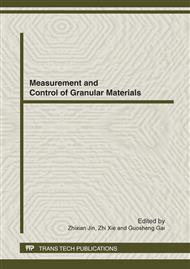p.110
p.114
p.118
p.122
p.127
p.135
p.141
p.146
p.151
New Findings for Explosion Protection of Bucket Elevators by Design Measures
Abstract:
Bucket elevators are devices for the vertical conveying of bulk materials. They can be found in many plants where silos are used. There are different designs of bucket elevators, whereby for the conveying of combustible bulk materials twin-leg bucket elevators are widely used. The conveyed bulk materials might be quite different, e.g. granulates, grains or pellets, which can contain more or less fine dust. The fine dust will be whirled up and dispersed by the moving buckets. Explosive dust/air mixtures can occur inside the elevator. Bucket elevators are frequently reported as causes of dust explosions [1, 2]. Depending on both the practical operating conditions and the explosion characteristics of the bulk material in many cases explosion protection by prevention of ignition sources are not sufficient to minimize the risk of a dust explosion. Therefore, additional explosion protection by design measures is required in order to limit the dangerous effects of a dust explosion. The technical rules or standards, however, which are available for the layout of explosion protection by design measures, e.g. explosion pressure venting or explosion suppression can not be used due to the specific geometry of bucket elevators. Because there was no sufficient data base to design explosion resistant bucket elevators in combination with explosion venting or explosion suppression, large scale tests were carried out on the test site of BGN and FSA in Kappelrodeck, Germany. In this paper the latest results and findings will be presented which can be used for the practical design of explosion venting and explosion suppression on bucket elevators in process industries.
Info:
Periodical:
Pages:
127-133
Citation:
Online since:
April 2012
Authors:
Price:
Сopyright:
© 2012 Trans Tech Publications Ltd. All Rights Reserved
Share:
Citation:


